Best mini amps for guitar 2025: power up your practice with these tiny towers of tone – these are my top picks
Short on space? Practice anywhere with these small guitar amps that pack a punch
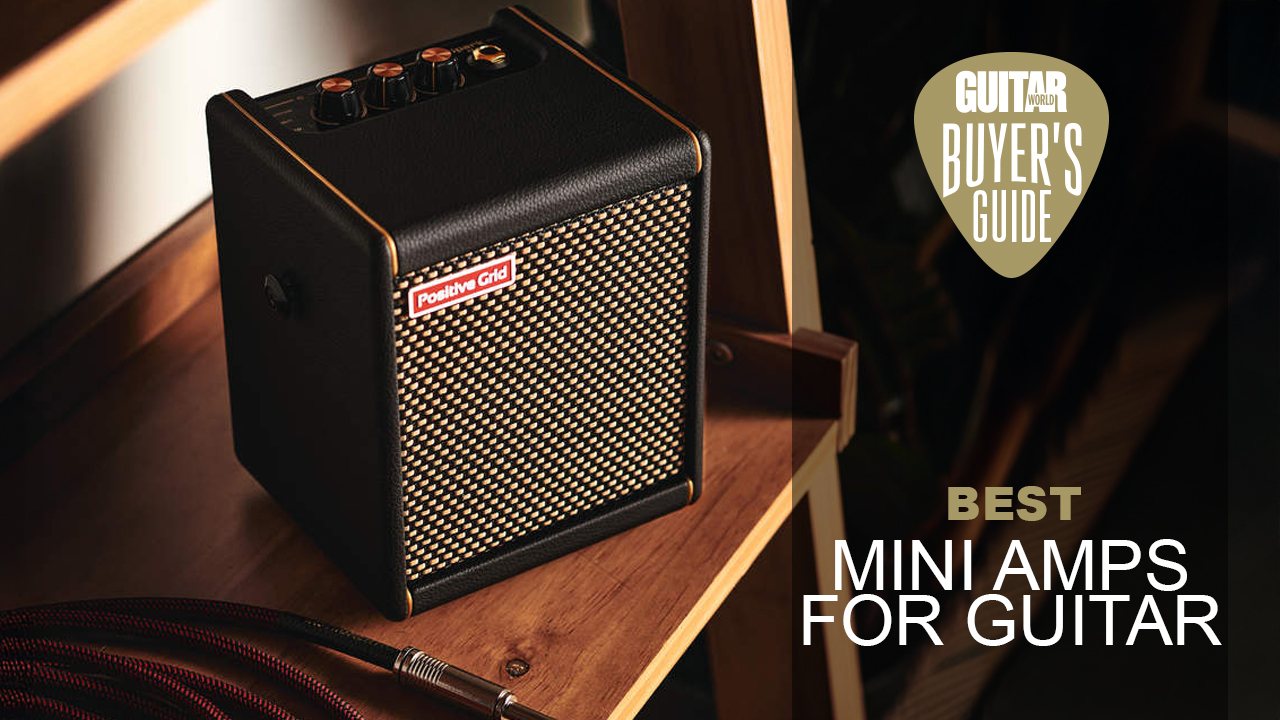
When space is an issue, the best mini amps for guitar can save the day. Leave your stacks and big, heavy tube combos at the studio or rehearsal room and have a neat, tidy amp solution at home or on the road ready to go at the flick of a switch.
It doesn’t matter what style of music you play, a mini amp will accommodate all guitarists, from beginner guitar players through to veterans. Cleans, crunchy tones, and high-gain sounds are covered by the various models that are available today. You’ve even got options featuring a range of studio-grade effects.
Many of the best small amps can even be run on batteries, meaning you’re not tied to a plug socket when it comes to practicing or jamming. If you travel for work or you’re touring, you can have a compact amp solution that fits in your backpack.
With more than 20 years of guitar-playing experience, I’ve played my fair share of mini amps. One of my first was the iconic Marshall Micro Stack, which I still own today. Since then, technology has come on leaps and bounds, and what was once a novelty has become a serious tool. Modern mini amps now offer a range of amp voices, effects, and features that make them genuinely valuable practice companions.
If you want the very best combination of amp tones and usability, then I would recommend the Positive Grid Spark Mini with its powerful modeling tones and room-filling sound. For a more budget option, the Blackstar Fly 3 is superb value at well below the $100 mark.
If you’re brand new to the brilliant world of amplifiers, scroll down to my how to choose section, where I lay out three important factors to consider when purchasing your first mini amp. There’s also a glossary section that clears up frequently mentioned jargon, along with a set of FAQ that answer common questions you might have.
Quick list
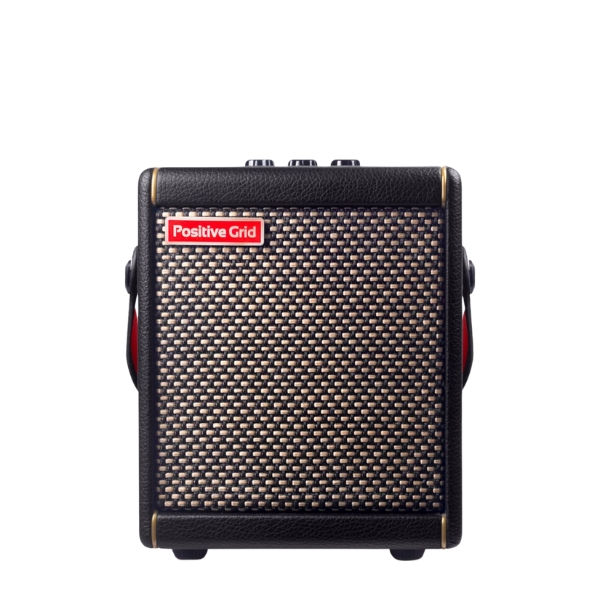
The ultimate combination of compact size with a big enough speaker for volume, the Positive Grid Spark Mini is our top pick. It's got a massive variety of amp tones and effects, all delivered in a room filling manner via the 2x2-inch speakers.
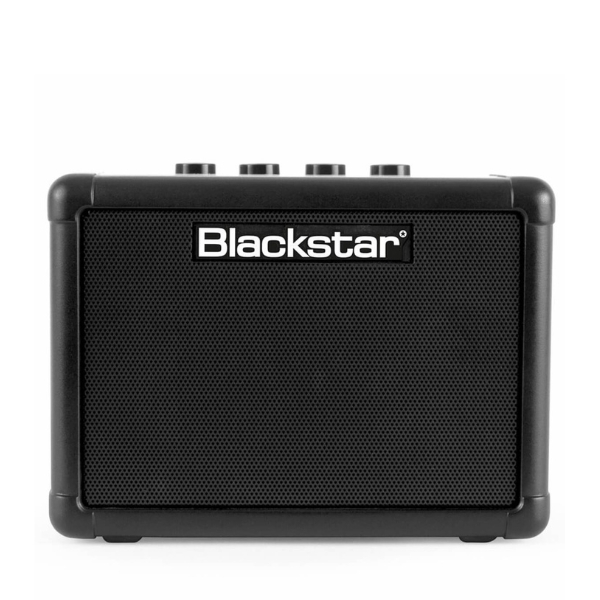
Priced well below the $100 mark, if budget is your main concern then the Blackstar Fly 3 is the mini amp you're looking for. It's got two channels for drive and clean tones, as well as a built in delay function and plenty of tweakability via the ISF feature.
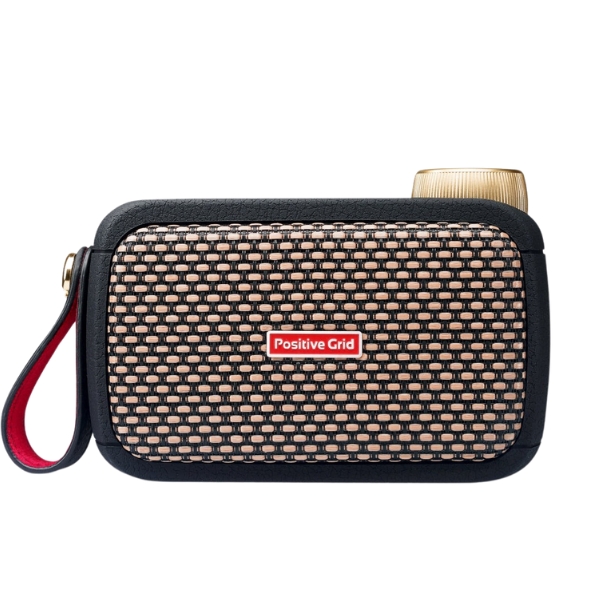
If portability is your number one concern, it doesn't get much smaller than the Positive Grid Spark Go. Barely bigger than your average smartphone, albeit much thicker, this literal pocket-sized guitar amp is perfect for practice on the road.

The newer, beefed-up version of the Katana Mini has everything you love about the original and a whole lot more. You’ve got a range of quality tones, from super clean to high gain. Whatever tone you’re after, you can get.
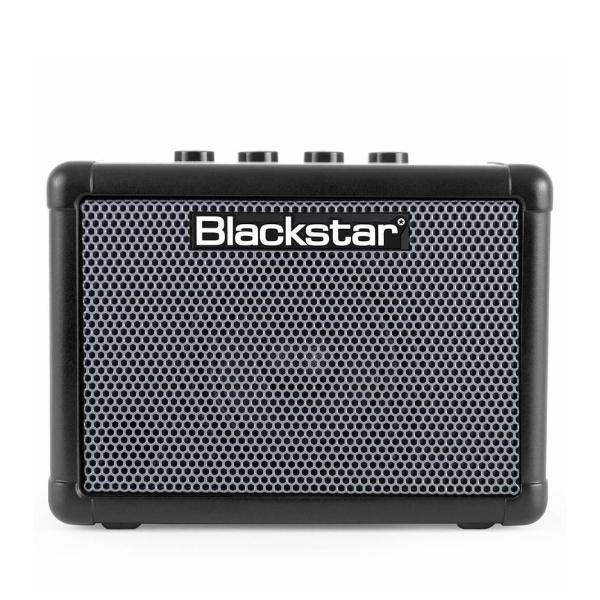
There's not a huge amount of choice for bassists who want small-sized bass tones, but for our money, the Blackstar Fly 3 Bass is the best of the bunch. A flexible EQ and extra button for more low-end make it a great practice tool for bass players.
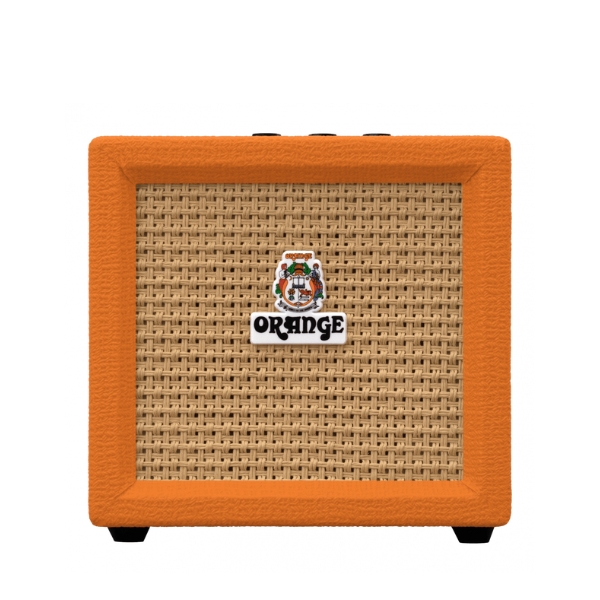
Only interested in overdriven rock tones? Well the Orange Crush Mini should be right up your street. It's a single channel mini amp that focuses on drivesounds without much in the way of bells and whistles, great for no-fuss rocking out.
Best overall
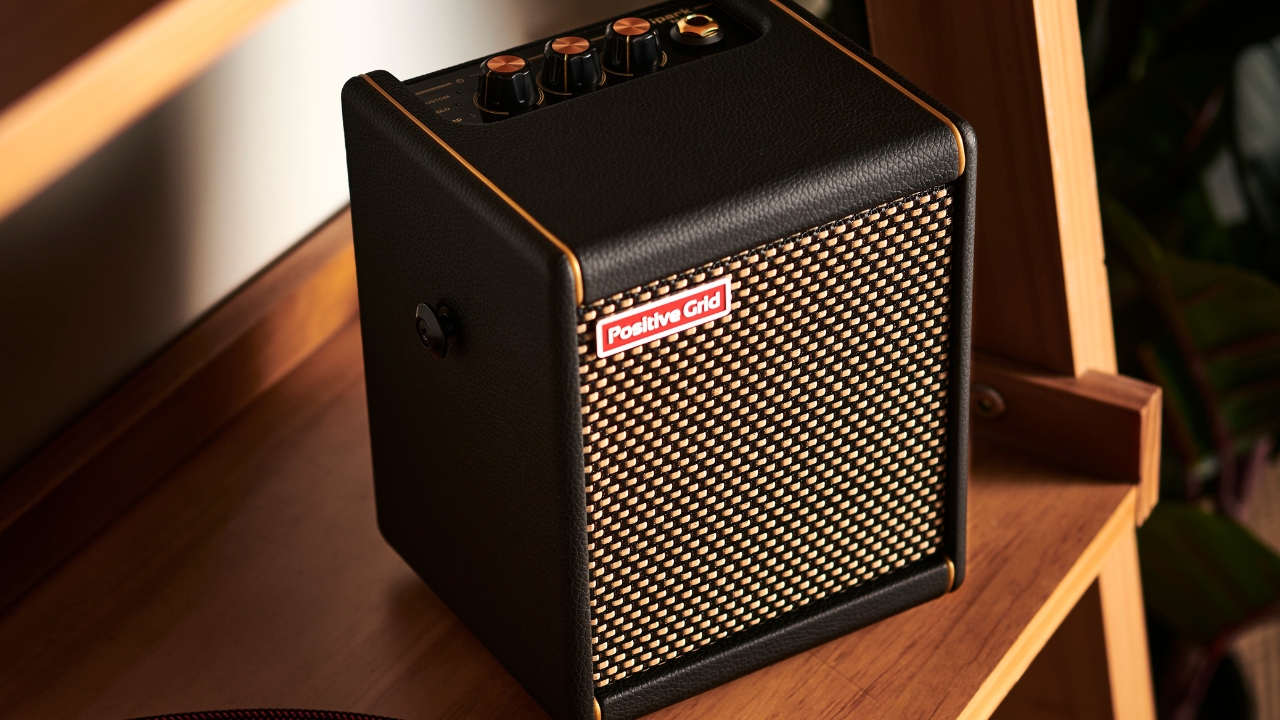
Specifications
Reasons to buy
Reasons to avoid
✅ Buy if you want a mini amp that does it all: With a huge amount of effects and awesome audio delivery, this is one of the best mini amps around.
❌ Avoid if you don't want to be tied to your phone: The Spark app is pretty much essential, so reliance on it might put some off.
Build quality: ★★★★½
Key features: ★★★★★
Performance: ★★★★½
Overall: ★★★★½
I've had one of these amps sitting on my desk for the last few months, and it really does live up to the hype. The Positive Grid Spark Mini is the perfect practice or writing companion, simple enough to dive into quickly, yet with enough depth to keep you coming back for more.
The sounds are outstanding quality and whether clean or high gain, this amp delivers such an incredibly vibrant and clear tone you’ll forget it’s coming from a tiny cabinet. Thanks to the passive radiator located on the underside, this thing is stupendously loud. Seriously though – turn it up over halfway with a humbucker-equipped guitar and watch the complaints come in from partners and family members.
It’s not just got great sound either, the companion Spark App is truly useful, providing a way to sculpt exacting guitar tones, or just download user-made presets. It also features a tuner and metronome, as well as some incredible practice tools like Smart Jam, which gives you a full band to play with that responds to your playing dynamics.

"A super-compact and portable digital combo with all the smart modeling fun of its larger sibling, the Spark MINI is a take-anywhere amp with so many inspiring sounds and helpful functions that it simply makes you want to play guitar more."
Read more: Positive Grid Spark Mini review
Best budget

Specifications
Reasons to buy
Reasons to avoid
✅ Buy if you want a great-sounding mini amp for an awesome price: It's extremely portable and will suit a variety of play styles for a great price.
❌ Avoid if you want more bells and whistles: There's plenty to like here, but given its price, it does lack some features found elsewhere.
Build quality: ★★★★
Key features: ★★★½
Performance: ★★★★
Overall: ★★★★
The Blackstar Fly 3 has been around for a while, but it’s still one of the best mini amps in the game. Combining ultimate portability with an incredibly loud sound, this battery-powered beast delivers fantastic tone on the go.
It’s got clean and overdrive channels, a built-in digital delay, and Blackstar’s patented ISF feature for tone sculpting. There’s a lot of play in the gain control on both settings, allowing you to dial in a great sound whether you’re a single-coil or humbucker kind of player.
The built-in delay is really usable, and whilst the delay time isn’t as long as what you might get on a bespoke pedal, it adds an excellent sense of space to your tone that’s perfect for practice. It’s also available for bass and acoustic guitar, so has got every type of guitar player covered.

"Overall, it’s hard to fault the Fly 3 as a home practice solution on the cheap. It can give you pristine cleans, crunchy classic rock, slapback slathered blues licks, and even modern metal, thanks to its twin-channel design."
Read more: Blackstar Fly 3 review
Best compact
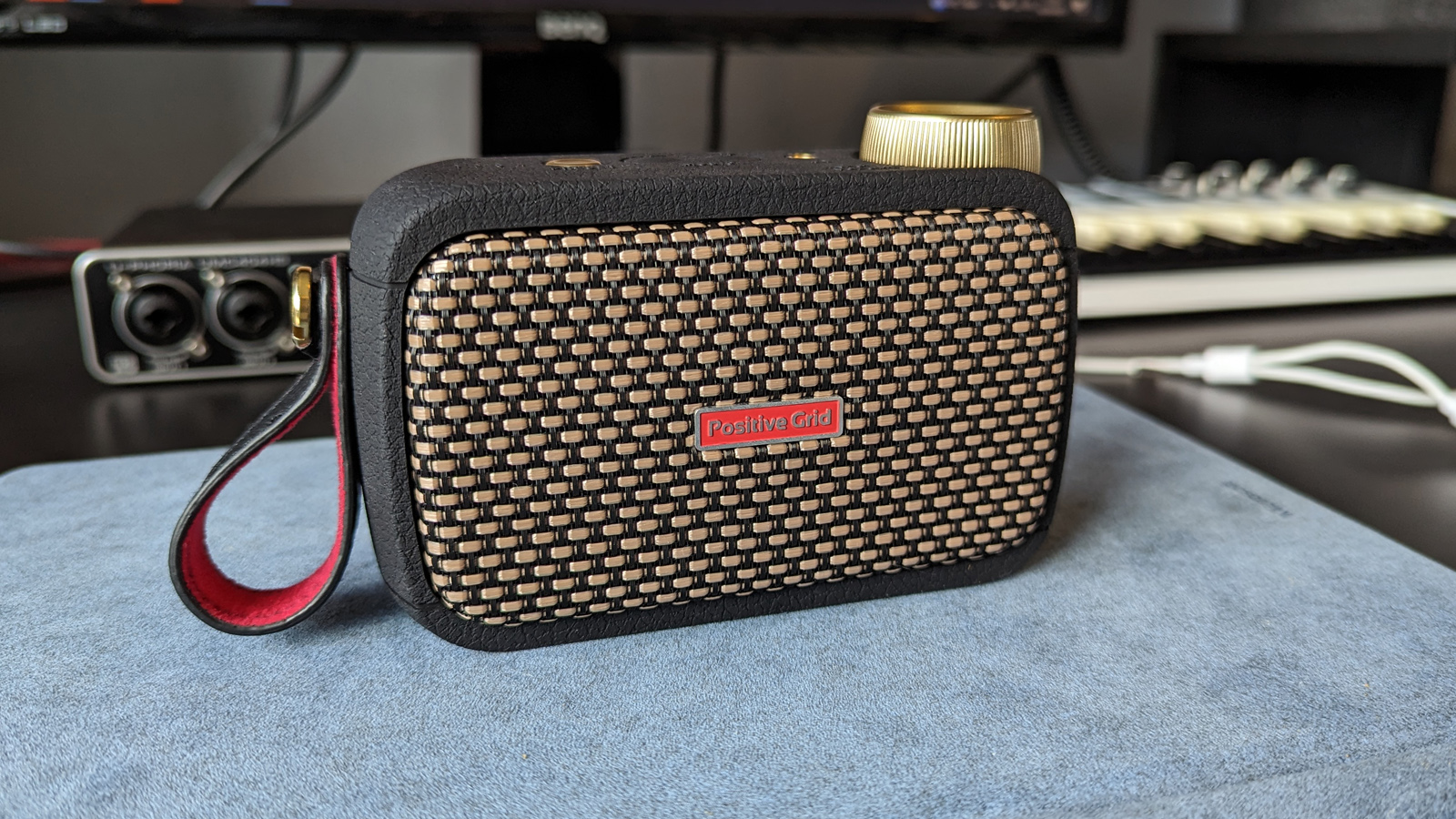
Specifications
Reasons to buy
Reasons to avoid
✅ Buy if you an ultra-portable mini amp: The GO will drop into a pocket or backpack no problem - and it's louder than you might think.
❌ Avoid if you a more sturdy amp: Given its size, it's not the most robust mini amp out there and can get knocked over easily.
Build quality: ★★★★½
Key features: ★★★★½
Performance: ★★★★½
Overall: ★★★★½
If you’re looking for a mini amp that you can take on the road with you, the Positive Grid Spark Go is my top choice. Small enough to fit in a decent size pocket, yet loud enough to fill a room it’s a great option if you value portability.
The sound selection with all of PGs smart amps is huge, making it adept at a variety of styles whether you want drop-tuned chugging or blues-musing. Amp models range from Fender inspired cleans right through to the saturation of the Soldano Slo, and you might be surprised at just how great they sound through that tiny speaker.
We did notice it getting overwhelmed when using a baritone with high output pickups, and the input placement is a little awkward if you’re using a heavy cable, as sometimes it will pull the amp over.
These are small issues though, far outweighed by the sheer choice of tones and excellent smart tools to help you practice.

"I can’t think of a better way to practice on the go or at home than this fantastic mini amplifier. It won’t take up loads of space while simultaneously filling the room with its impressive volume and satisfying any guitar player with a high-fidelity sound."
Read more: Positive Grid Spark Go review
Best for metal
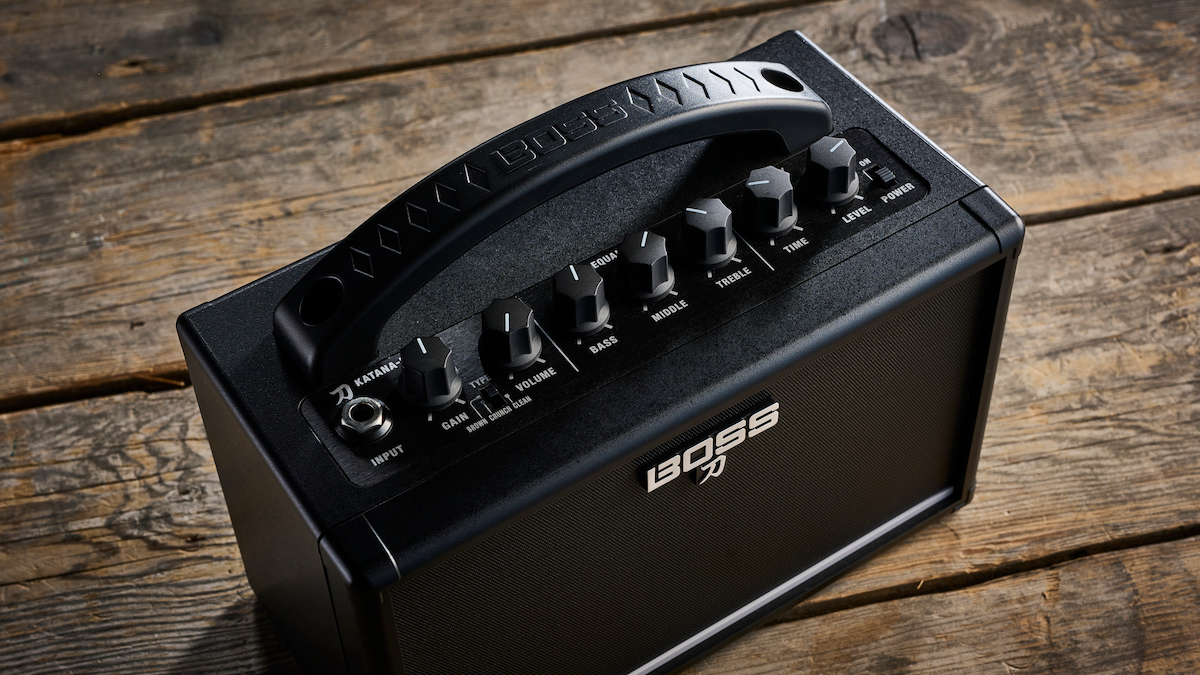
Specifications
Reasons to buy
Reasons to avoid
✅ Buy if you want an amp with a good range of effects: There's an excellent array of effects here and it also has an in-built tuner. A great value for money amp.
❌ Avoid if you need an amp that has power flexibility: The Katana Mini doesn't have a mains power option and its lack of USB recording might put some off.
Build quality: ★★★★½
Key features: ★★★★½
Performance: ★★★★½
Overall: ★★★★½
The newer, beefed-up version of the Katana Mini has everything you love about the original and a whole lot more. You’ve got a range of quality tones, from super clean to high gain. Whatever tone you’re after, you can get.
Boasting a slightly bigger speaker, and an increased power rating of 10W, this Katana is considerably louder than its younger sibling, in fact it’s probably the best mini amp if you want some serious volume.
Not only is it loud, the sound quality is also excellent – it doesn’t suffer from any sort of boxiness that you might get with smaller amps.
The Katana X also has a comprehensive effects section, allowing you to dial in different modulations, delay, reverb, and more. It’s got a tuner built-in, and it doubles as a really good Bluetooth speaker.

"If you want great tones and a solid range of effects in a small package without any reliance on apps and firmware updates, this is the mini amp to buy right now. You'll be surprised just how loud it can get, too."
Read more: Boss Katana Mini X review
Best for bass
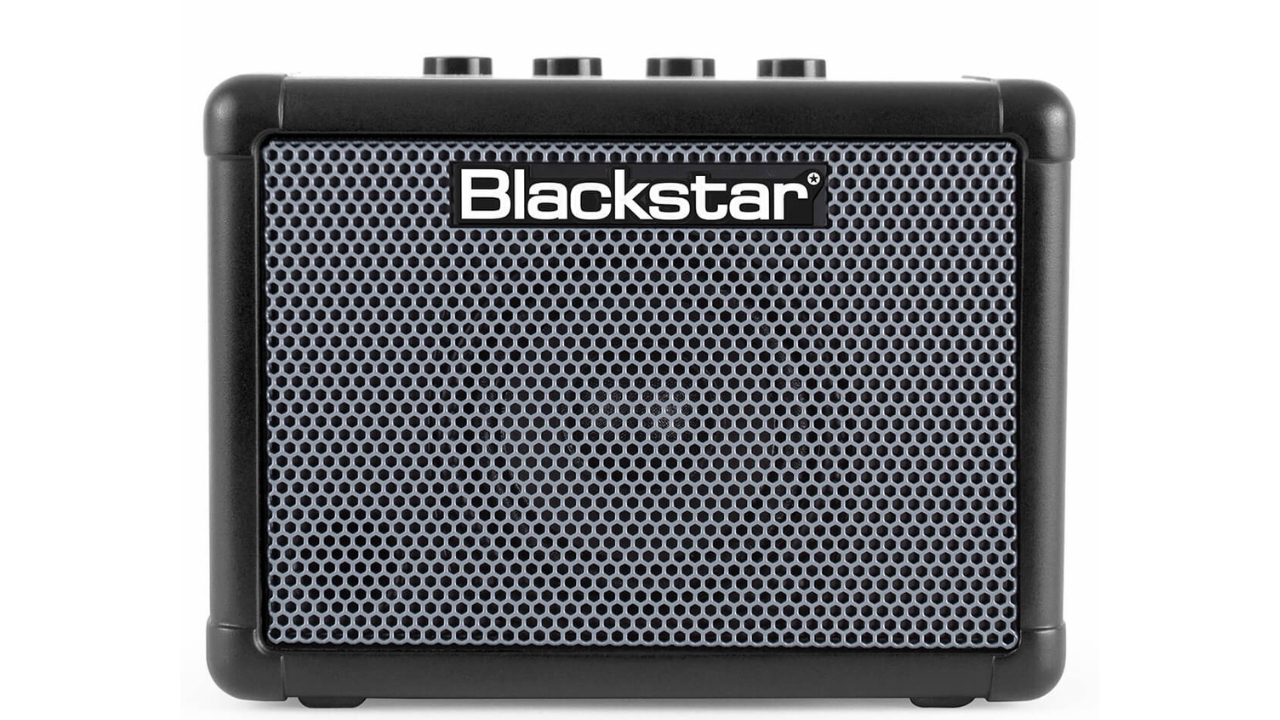
Specifications
Reasons to buy
Reasons to avoid
✅ Buy if you just want an mini amp for your bass: It's not feature-rich, but this amp is perfect for bassists looking for a small unit.
❌ Avoid if you want an effect-heavy mini amp: This is a pretty straightforward mini amp, so you're not getting anything in the way of effects.
Build quality: ★★★★½
Key features: ★★★★
Performance: ★★★★½
Overall: ★★★★½
There’s not a huge amount of choice for bassists when it comes to mini amps, and that’s largely to do with the nature of bass guitar. To get a great bass sound you generally need a large speaker, so whatever trickery the Blackstar Fly 3 Bass uses is very impressive indeed.
The Fly 3 Bass sounds really full considering the small size, delivering a nice clean bass tone with an added overdrive channel for changing things up. You can get the gain knob to about half way before it starts to breakup, giving you some extra volume if you want to keep it clean but loud.
The depth and sub controls offer EQ tweaking and extra low end respectively, although we did find the speaker getting a bit flappy with the sub control cranked.
It doesn’t offer a huge amount of sounds, but for practicing at home using your bass without using a headphone amp, its undoubtedly the best option out there.
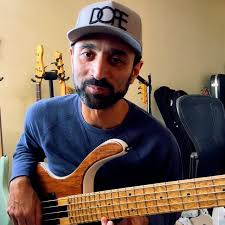
"The handy-dandy Fly Bass doubles as a competent practice amp and portable music-playback device. A lot of fun for minimal dough."
Read more: Blackstar Fly 3 Bass review
Best for rock
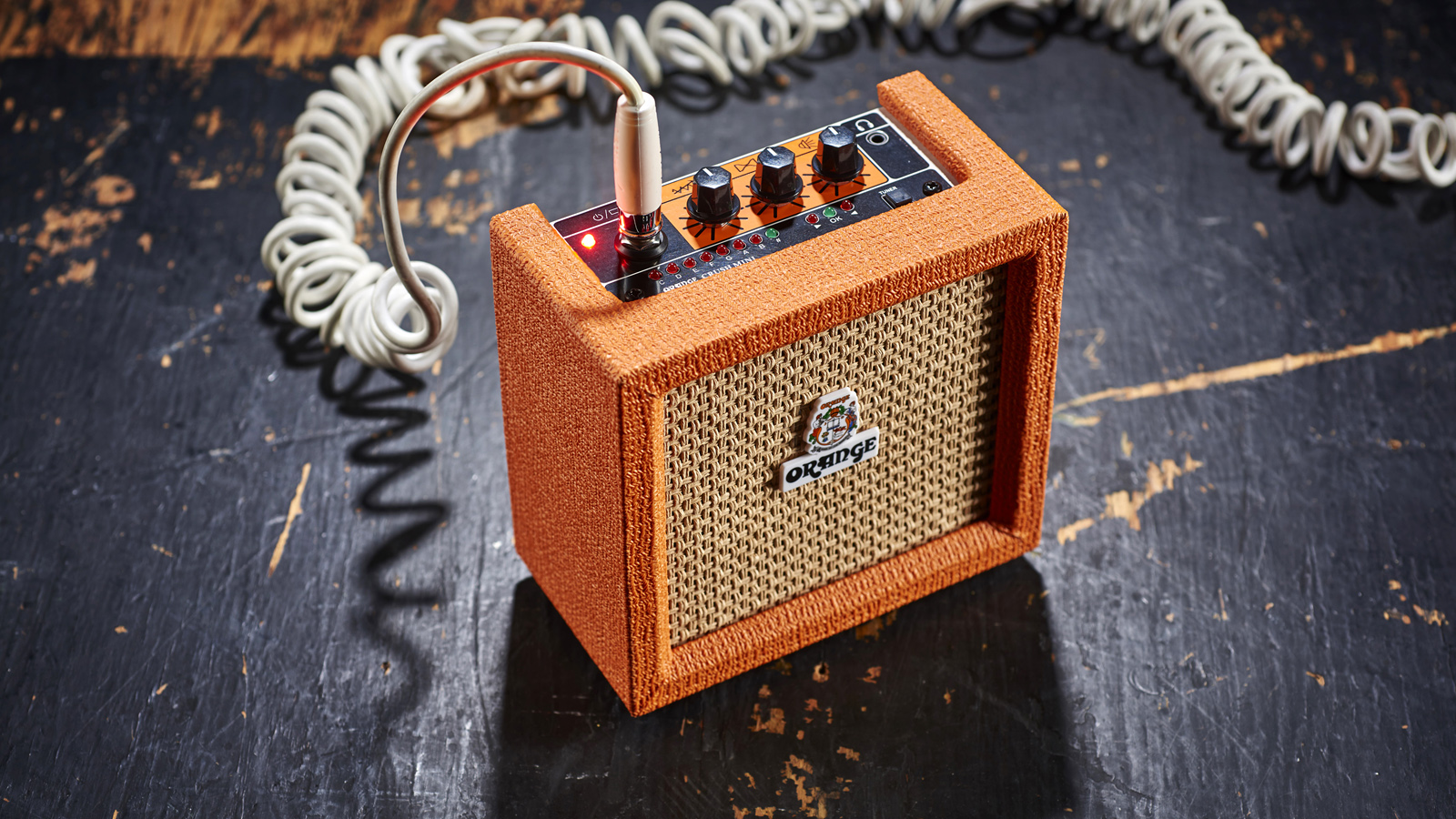
6. Orange Crush Mini
Our expert review:
Specifications
Reasons to buy
Reasons to avoid
✅ Buy if you want a no-frills mini amp for playing on the go: The Orange Crush Mini is as straightforward as amps come, with no onboard effects.
❌ Avoid if effects are a necessity for your practice sessions: Great for rocking out on the go, but this amp doesn't cater for those who want the addition of effects.
Build quality: ★★★★
Key features: ★★★½
Performance: ★★★★
Overall: ★★★★
If you’re looking for a great practice amp to use with your existing pedalboard, or you just want top-tier sound without having to download any apps, then you should definitely check out the Orange Crush Mini.
The clean tone is a little on the quiet side, but dial in some gain and you’ll soon find this mini amp’s full voice. The single EQ knob adjusts the midrange content, giving you everything from super scooped to a lovely, heady guitar tone. Combined with your guitar’s tone and volume controls, you can dial in pretty much any sound you can think of.
It’s got a built-in tuner, an aux-in, and interestingly, an 8ohm speaker out for connecting to a larger cabinet. This makes the Orange Crush Mini a fantastic, no-frills mini amp for practice at home or on the move.
Also consider...
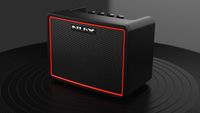
Nux Mighty Lite BT MKII
★★★★½
This 3W desktop amplifier has a wealth of effects, with 21 different options across reverb, modulation, and delay, not to mention 34 built-in IRs, a drum machine, Bluetooth connectivity, and USB-C audio interface capabilities. There’s no denying that, for the money, NUX has packed this amp to the rafters. The only potential drawback? Its best features need to be accessed via the MightyAmp Editor app.
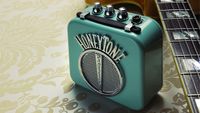
Danelectro Honeytone
★★★★
As far as vintage cool goes, the Danelectro Honeytone has got you covered if you want a small guitar amp that looks great. Combining excellent tone with its retro-inspired design, this amp is perfect for practicing at home and looking great whilst doing it. The clean tone on this is really nice, sounding very articulate and full. It’s your classic solid-state clean tone, but for a practice amp more than capable of doing the job. The overdrive can be dialed in to taste and gets a little fizzy at higher settings, but it adds nicely to the overall versatility.
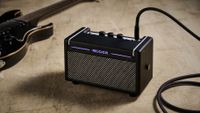
Mooer SD10i
★★★½
If it’s a huge variety of tones you’re after, then this Mooer Mini Amp wins out and comes highly recommended. You’ve got 52 different amp types within it, as well 49 effects and it's all controlled via the iAMP app. However, you can also witch sounds using the rotary control and preset button on the actual amp itself. The sound quality on the Mooer SD10i is really good, especially when you take the price into consideration. There’s plenty of bottom end for such a small amp, and most of the preset tones ring out nice and clear - although some are pretty similar sounding. You’ve got super clean sounds as well as higher gain options.
How to choose a mini amp

Why have I written an article discussing the best mini amps for guitar? A good question, especially if you’re a new player looking for the best bang for your buck and don’t quite know who to trust. Well, not only have I been playing guitar for more than 20 years, but for the last decade, I’ve worked in a busy high-street guitar store, helping guitarists select the best mini amp for their needs. These are the three steps I use to help players find the right option.
1. Number of channels/Amp voices
First things first, how many channels or amp voices would you like? Mini amps used to be very basic, typically offering just one clean channel, or perhaps two, with the second adding overdrive. However, modern mini amps can include multiple amp voices across those channels, emulating the sounds of different amplifier types.
The more amp voices and channels you have, the more enjoyable and effective your practice sessions can be, particularly if you’re learning songs that rely on specific tones. If that sounds useful to you, make sure the amp you’re buying offers multiple channels or amp models to switch between.
2. Effects
Once you’ve considered the amp voices and channels, take a look at the built-in effects. Like amp voices, having plenty of effects on hand is a great way to learn, practice, and sound like your heroes. Some mini amps, like the Boss Katana-Mini X, have built-in effects that are accessible directly from the control panel, while the Positive Grid Spark Mini offers plenty of effects that are controlled through an app. Either way, decide whether you want more options or fewer, depending on your goals.
3. Output
The amplifier’s power output is the third thing you should consider. An amplifier’s output is measured in watts, and this is a quick and effective way to understand how loud your amp will be. Although this is very important for bigger amps, smaller amps are generally much quieter, so it will likely have less of an impact here. Mini amps typically range from around 1 watt up to 10 watts, so if you’re looking to make some noise, a 10W amp will suit you better. On the other hand, if you want to keep things quiet for late-night practice, a lower wattage will do the job.
FAQs
What is a mini amp?
A mini amp is just like a regular guitar amp, but smaller. Due to the smaller size, you’ll find they have less overall volume and fewer features as the speakers and cabinet need to be smaller in order for them to fit into your living space. That doesn’t mean you can’t get great sound out of them, many mini guitar amps use technologies like passive radiators to increase the volume, resulting in an amplifier that’s deceptively loud.
What are the benefits of using a mini amp?
Most guitarists turn to small guitar amps when they need something to practice with whilst either saving space, or being easy to transport with them. We use a mini amp on our desk, as it’s super easy to plug in and play when inspiration strikes. Many of the best small guitar amps feature recording outs, which means you can either use it as an audio interface in its own right or plug it into your existing rig. Many mini amps also come with practice apps, which can include backing tracks to play along to, access to more effects or amp sounds, as well as tuners and metronomes.
Rather than having to set up your whole rig each time you want to play, a mini amp lets you quickly plug in and get a great sound. They’re also much lower in volume, so less chance of annoying your neighbors or family trying than cranking your regular 2x12 tube amp. If you find that you do need more volume and have a little more room to play with, take a look at our pick of the best desktop amps.
Are there any mini amps with effects?
Most mini amps come with either a single effect or none. Usually you’ll find digital delay onboard, and sometimes an overdrive switch but as technology has advanced more modern offerings like the Spark Mini, Yamaha THR5, and Vox Mini GO 3 have started to include both amp models and effects. Mini amps with effects are typically more expensive, whereas those without can often come in around or below the $/£50 mark. It all depends on what you need for your practice regimen, so if you don’t use effects with your regular rig, you probably won’t miss them with your practice amp.
Does mini amp equal mini tone?
Not really! As technology has come on, manufacturers have been able to produce small guitar amps that still sound great. Some of the really small micro amps, especially at the cheaper end of things, might sound a little boxy, but not all of them.
Clever speaker design and years of trial and error have meant that you can now get a big chunky tone, or a nice sparkly, glassy clean sound through a small amp.
Of course, if we’re talking about volume, then yes, most of these mini amps are quieter than practice or gigging amps. You’d struggle to get through a gig with most of the above options, but that’s not really what they have been designed for.
Can I use a mini amp on the go?
You’ll find that some of the best mini amps for guitars are battery powered so can be taken with you anywhere. If portability is key, then look for something that is either rechargeable or runs on batteries. Most of the options can still be run on mains power too though, so you don’t have to fly through batteries whilst playing at home.
Can I use a mini amp for live performances?
Unfortunately, a mini amp isn’t likely to have enough power for a live performance. Most of the small guitar amps on this list come in under 10 watts, which is nowhere near enough to shine onstage. These amps are designed for use at home, and some of them will sound very loud in smaller spaces. Put a mini amp in a proper venue though and it’ll soon get swallowed up by the drums, bass, PA system, and other guitars. If you need an amp on the cheap, have a look at our best budget guitar amps under $500 for some bargain buys that are gig ready.
Can I stream music on mini amps?
Many mini amps allow you to stream music thanks to Bluetooth integration. Traditionally, Bluetooth was a rarity on guitar amps, however, more brands are now including Bluetooth connectivity, particularly on amps designed with beginners in mind. Streaming music through your amp can be a great practice tool, especially for jamming along to backing tracks or songs you’re learning.
Many mini amps now offer Bluetooth not just for streaming, but also for connecting to companion apps for deeper tone and effects editing. Models like the Positive Grid Spark Mini and NUX Mighty Lite BT MkII rely on Bluetooth for that very reason. That said, not every mini amp includes Bluetooth, so always check the specifications before buying to make sure it offers what you need.
Can I play acoustic guitar on a mini amp?
Be wary when plugging an acoustic guitar into a mini amplifier. Acoustic guitars produce a wider frequency range than electric guitars, including deeper bass notes. Unless your mini amp has been designed to handle these lower frequencies, you risk damaging or distorting the speaker.
That said, more brands are now creating mini amps that can safely handle acoustic frequencies. For instance, the Blackstar Fly 3 Mini comes in both acoustic and bass versions, while the NUX Mighty Lite BT MkII can accommodate electric, acoustic, and bass guitars all in one unit.
Is a mini amp loud enough to play with other guitarists?
While you won’t be able to gig alongside a drummer with a mini amp, jamming with another guitarist is often possible. It really depends on how loud the other player is. If they’re using a 25-watt tube amp, you won’t stand a chance of being heard. However, if they’re also playing through a mini amp, or if you’re accompanying an acoustic guitar, a 5 to 10-watt mini amp should be loud enough to hold its own in a small jam session.
Do you have to use an app to control a mini amp?
Not necessarily. There are plenty of mini amplifiers that can be fully controlled from the control panel on the amp itself. The Boss Katana Mini X is a great example of a mini amp that’s entirely accessible through physical controls. However, more and more brands are relying on companion apps to unlock their amps’ full potential. The nature of mini amps means there’s not much physical space to include every control, so shifting deep editing options to a connected device is a clever way of maximizing their functionality.
Glossary
Amp modeling: This is a digital process that recreates the tones of classic amps by using digital signal processing.
Amp voice: The specific tonal character or model setting on an amp that replicates the sound of a particular amplifier type or style.
Cabinet: This is the part of the amplifier that houses the speaker. An amp’s cabinet is typically made from wood or plastic.
Channel: This is a signal chain on an amplifier that has its own volume control.
Combo amp: This is a type of amplifier that houses the speaker and amplifier in one single unit.
EQ: The section on an amplifier that allows you to boost or cut particular frequencies such as bass, middle, or treble.
Gain: The gain control affects the amount of guitar signal that is being amplified.
IR (impulse response): A digital capture of how a specific speaker cabinet and microphone setup sounds in a given space. Used in modern amps and modelers to accurately reproduce the tone and feel of real-world gear.
Power output: Measured in watts, the power output will tell you how powerful an amplifier is. Although there are other factors involved, it's a good indication of how loud that amp will be.
Preamp: This is the section of your amplifier that boosts the weak guitar signal into a line-level signal that can be further used by the rest of the amp.
Speaker size: Each amplifier will come with a different speaker size, measured in inches. Mini amps typically have 1- to 3-inch speakers. Bigger speakers can handle louder volumes and offer more bass response.
How we test
When testing mini amps we'll largely take a similar approach to that of regular sized guitar amps when it comes to sound, feature set, and build quality. Of course, one of the must-haves for a mini amp is small size, so all of our usual tests will be done with the caveat of their smaller size.
Our first check is to look over the features and specs of the mini amp. We'll look at how many speakers it has and their size, whether or not the amp has modeling features or just a single channel, as well as any other additional effects or features like tuners and Bluetooth connectivity. Understanding the feature set of the amp helps us determine where it sits in the pantheon of mini amps, and determine its most useful use case too.
Next we'll look at the build quality of the mini amp. We expect the quality to be just as good as any other amplifier, rugged enough to survive being moved from room to room or taken in a bag on the road, as well has upholding a certain level of general quality in terms of the finish. We'll examine each component of the amp in detail, making sure connections are solid and that any knobs and buttons are robust.
A mini amp will obviously never be able to compete with a regular sized amp when it comes to sound quality, but they are designated for practice rather than performance. Typically we'll start our sound testing by setting every EQ to the middle position, but if we're testing an amp with modeling capabilties then we'll scroll through the presets to see how they sound. We're looking for great quality sound, albeit within the limitations of smaller speaker. We'll test the amp with various different pickup types, examine how it responds at different gain and volume settings, before adding in any other features like effects.
Read more about our rating system, how we choose the gear we feature, and exactly how we test each product.
Why trust us?
☑️ A global audience of 3.8 million guitarists monthly
☑️ 1,200+ reviews on GuitarWorld.com
☑️ 30+ years of product testing at Guitar World
Guitar World boasts over 44 years of expertise and stands as the ultimate authority on all things related to guitars. The magazine and website feature expertly written gear round-ups and top-quality, authoritative reviews penned by a team of highly experienced industry professionals.
Guitar World's inaugural print issue hit the shelves in July 1980, and ever since, it has been captivating players and enthusiasts with engaging lessons, insightful interviews with the biggest guitar heroes, and priceless buying advice for newbie players.
Furthermore, GuitarWorld.com continues this legacy online and serves as the hub of the world's foremost authorities on guitar playing. The site not only hosts content from Guitar World but also showcases articles from respected publications such as Guitarist, Total Guitar, Guitar Techniques, and Bass Player. With a reach extending to 3.8 million players each month, GuitarWorld.com is a go-to destination for guitar fanatics globally.
Meet the experts

After spending a decade in music retail, I’m now a freelance writer for Guitar World, MusicRadar, Guitar Player and Reverb, specialising in electric and acoustic guitars, bass, and almost anything else you can make a tune with. When my head’s not buried in the best of modern and vintage gear, I run a small company helping musicians with songwriting, production and performance, and I play bass in an alt-rock band.

Matt has been recording bands since the mid-noughties, cutting his teeth with an M-Audio M-Track 2 and a copy of Cubase on Windows XP. Since then he's used countless audio interfaces to record music for bands across the UK, covering everything from djent to jazz. As a MusicRadar writer, Matt has reviewed 15 audio interfaces in the past year alone, and over 50 different products including guitars, amps, and pedals. Before becoming a writer, he spent five years in the music retail industry working for Dawsons Music and Northwest Guitars, providing expert advice to musicians. He’s currently studying Music Production at Spirit Studios in Manchester, UK.

Ross has been a music lover and guitar player since the age of 8. He has spent the five years since graduating from university working in music retail, selling guitars, amps and more. Ross is particularly interested in electric guitars, pedals and amplifiers and his current rig includes a trusty 2009 American Standard Stratocaster and Vox AC30S1 with a few Walrus Audio and Way Huge pedals in between.
Latest updates
22/10/25: The guide has been reworked and now each entry has "at a glance" panels and star ratings. The Nux Mighty Lite BT MKII has been added to the guide, while the FAQ section has been been expanded. We've also now included a glossary highlighting key terms alongside a section explaining how to best choose a mini amp. Finally, a "meet the experts" section has now been included.
All the latest guitar news, interviews, lessons, reviews, deals and more, direct to your inbox!

Matt is a Junior Deals Writer here at Guitar World. He regularly tests and reviews music gear with a focus on guitars, amps, pedals, modelers, and pretty much anything else guitar-related. Matt worked in music retail for 5 years at Dawsons Music and Northwest Guitars and has written for various music sites including MusicRadar, Guitar Player, Guitar.com, Ultimate Guitar, and Thomann’s t.blog. A regularly gigging guitarist with over 20 years of experience playing live and writing and recording in bands, he's performed everything from jazz to djent, gigging all over the country in more dingy venues than you can shake a drop-tuned guitar at.
